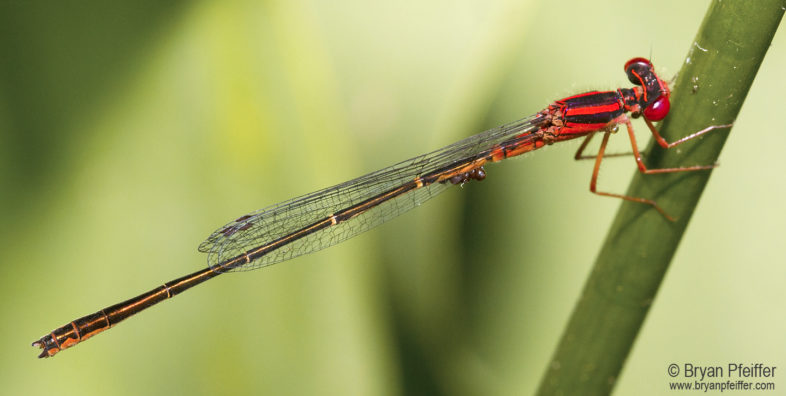
Congratulations, Vermont. You’ve got a new damselfly. Its name is sort of an oxymoron.
You know the bluets, right? Those little blue and black damselflies we’re seeing at water’s edge? Yeah, bluets are blue … except when they’re not. Like when they’re red — and the aptly named Scarlet Bluet (Enallagma pictum).
Nick Block found one at a pond in southern Vermont on July 4, 2018 (a happy Independence Day, indeed). It becomes Vermont’s 45th known damselfly species (along with 101 known dragonfly species).
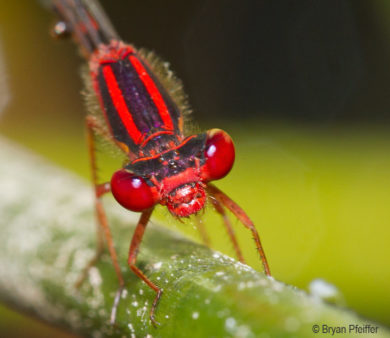
Way to go, Nick!
Scarlet Bluets range east and south of us here in Vermont, often in sandy coastal plain ponds of New England. This particular bluet belongs to a suite of damselflies of high conservation value here in the Northeast. So Nick’s discovery is a major conservation coup for us here in Vermont (one we’ve been expecting at that very pond, but never got around to checking it properly). It could be the farthest west Scarlet Bluet in the world.
By the way, among these little damselflies, there are also Orange Bluet (Enallagma signatum), the amazing Burgundy Bluet (Enallagma dubium) and plenty of others in the visible spectrum, departing from the blue and black thing, but lacking such aptly colorful names.
I photographed the Scarlet Bluet pictured above at a coastal plain pond in Rhode Island some years ago. And what a face (there to the right). Nick’s Scarlet Bluet record is now enshrined on iNaturalist. And it’ll require me to (happily) add a new page to the Vermont Dragonfly and Damselfly Atlas website.
Below is your more typical bluet, Boreal Bluet (Enallagma boreale), as well as Orange Bluet, Burgundy Bluet (from Virginia), and Rainbow Bluet (Enallagma antennatum).

Boreal Bluet (Enallagma boreale) / © Bryan Pfeiffer
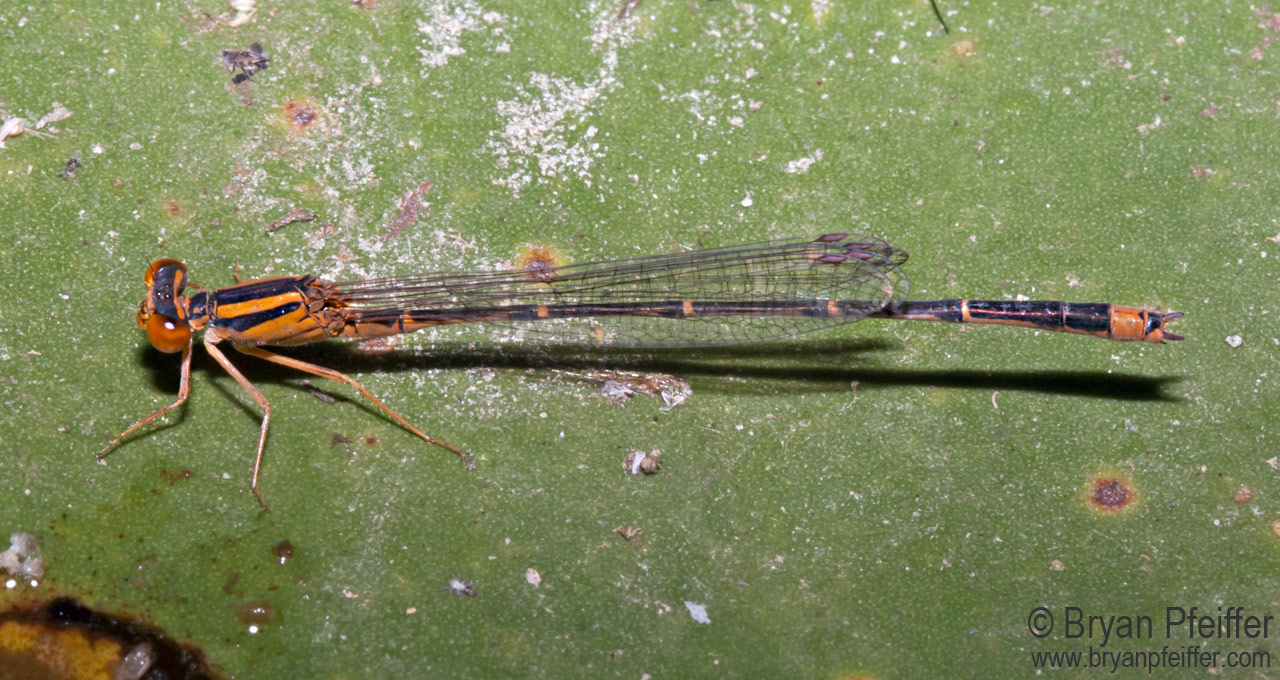
Orange Bluet (Enallagma signatum) / © Bryan Pfeiffer
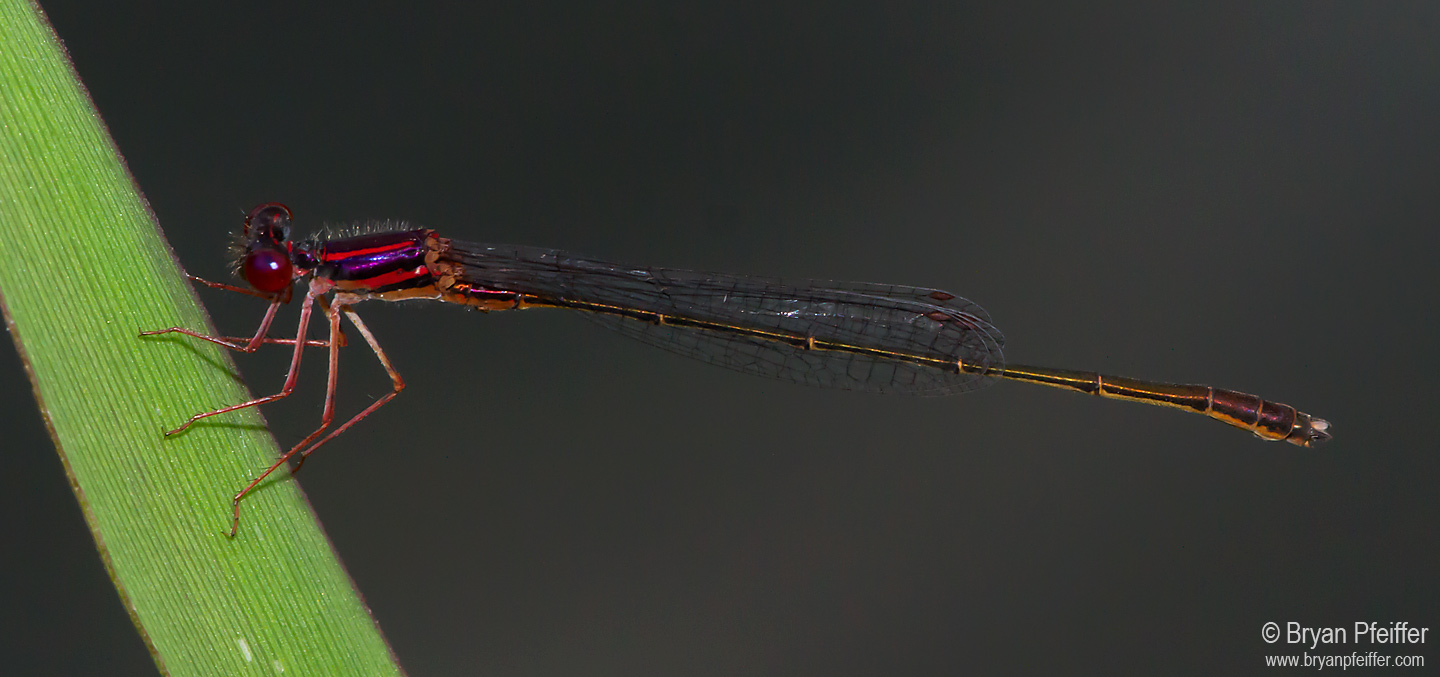
Burgundy Bluet (Enallagma dubium) / © Bryan Pfeiffer
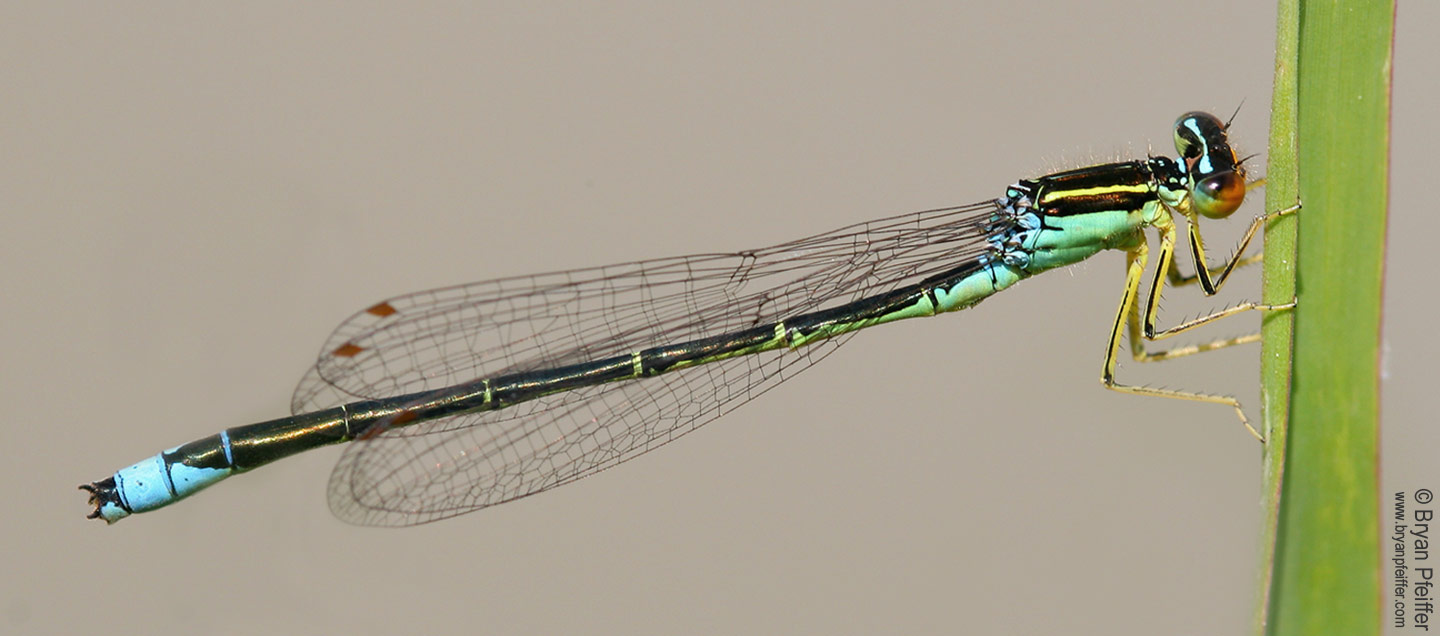
Rainbow Bluet (Enallagma antennatum) / © Bryan Pfeiffer
